If you’re going to be doing some squats, deadlifts, strict presses, and a variety of Olympic lifts, you’re going to need a weight belt. And contrary to what most people (including some manufacturers) believe, it’s not to ensure that your back has enough support to prevent injury. A weight belt is necessary to provide your abdominal muscles a “wall” to push against so that you can tighten your core even more in order to lift a very heavy weight. Because of this misconception, some weight belts in the market are actually not designed correctly. If you’re going to buy a weight belt, you’ll want to get the right one that meets your workout needs. Below, we’ve listed the best weight belts on the market.
Top 10 Weight Belts Of 2020 Reviewed
1. Dark Iron Fitness Genuine Leather Pro Weight Lifting Belt
The Dark Iron Fitness Genuine Leather Pro Weight Lifting Belt stands out from the rest of its competitors due to one simple fact – lifetime replacements. We all know that weight belts will break over time. But to offer something like this means that they’re incredibly confident about the quality of their product. And we can’t say they’re wrong. Made from genuine buffalo hide leather, the belt feels soft and comfortable.
It’s also very flexible which may be due to the thinness of the belt. It definitely isn’t as thick as others we’ve reviewed and loved. But even if it does lack that stiffness necessary for support, it still does ok. For the heaviest lifts, you might want a thicker belt. But if you’re not there yet, this is a great leather option. What we do wish is that the holes were slightly closer together for finer adjustment.
Pros:
- Solid construction
- Very comfortable
- Lifetime replacement guarantee
Cons:
- Not thick enough for truly heavy lifts
- Holes need to be a little bit closer
2. Fire Team Fit Weightlifting Belt
 Best Weight Belt For Lower Back Support
Best Weight Belt For Lower Back Support
If budget is tight or you just want to try out a weight belt without spending too much money, the Fire Team Fit Weightlifting Belt is the best option. It features a similar construction to nylon belts that cost a whole lot more. It feels very comfortable when worn and the Velcro closure is easy to use. There’s also a slide stop to prevent your Velcro strap from getting loose which is a problem with this kind of closure.
The stitching in the belt is heavy duty which means this belt was designed to last. We like the fact that the sides were narrowed to naturally follow the contoured design of the human body which reduces the amount of rubbing you get against your rib cage. However, it does have an initial rubber-like smell when you first get it which takes a while to go away. Also, this isn’t as durable as leather nor is it ideal for heavier weight training.
Pros:
- Very affordable
- Quality construction
- Slide stop for the Velcro strap
Cons:
- Has an initial rubber-like smell
- Not as durable as leather
- Not for heavier weight training
3. Harbinger Women’s Nylon Weightlifting Belt
 Best Weight Lifting Belts For Beginners
Best Weight Lifting Belts For Beginners
The Harbinger Women’s Nylon Weightlifting Belt is the most affordable one on our list. It features a foam core for increased comfort. It tapers towards the front which allows you a full range of motion whether you’re weightlifting or doing other strength training exercises. We love that the Velcro strap is 2 inches wide and features a heavy gauge buckle to ensure that it stays in place.
For beginners, this is definitely the best deal, especially if you’re not sure if you’re going to follow through on your weightlifting. However, the sizes tend to run a bit big. Also, while the belt is comfortable, it can get hot around your waist. Take note that it only comes in one color – pink. So if that’s not your favorite color, you might want to check out our first pick instead.
Pros:
- Very affordable
- Heavy gauge buckle
- Slight taper to the front for a full range of motion
Cons:
- Can get hot
- Sizes tend to run big
- Comes in only 1 color – pink
4. Stoic Powerlifting Belt
 Best Weight Belt For Squats And Deadlifts
Best Weight Belt For Squats And Deadlifts
The Stoic Powerlifting Belt is a 4-inch wide, 10mm thick, single prong weight belt. It has a non-tapered design with a 1.22mm of suede lining for improved comfort. The belt is made of vegetable tanned, full grain sole leather with nylon stitching for durability. The single prong buckle is heavy duty and easy to use.
Like most leather weight belts, you will have to break this in. Also, the sizes run small. There have been reports that the loop that holds the end of the belt may break after some time so you may want to take note of that. However, the ease of use, quality of the build, the amount of support, and price of the belt all tell us the same thing – this is one belt you don’t want to miss out on.
Pros:
- High-quality build
- Single prong buckle
- Excellent support and comfort
Cons:
- Requires breaking in
- Sizes run small
- Belt loop may break over time
5. Ader Leather PowerLifting Weight Belt
 Best Weight Belt For Squats
Best Weight Belt For Squats
The Ader Leather PowerLifting Weight Belt is one of the few that offer a wide range of sizes, from extra small to XXXL. What we love about this weight belt is that it’s simple and hits all the right specs – 4 inches wide and 10mm thick. It has the right amount of “coverage” to ensure you get the abdominal pressure you need for stability.
It also has the right amount of stiffness required for most types of weightlifters, barring those that enter competitions. The belt itself is quite durable, lasting years of frequent use. However, the edges of the belt dig a little into your skin so you may want to sand it down a bit to prevent bruises. Also, a lot of the users felt that the double-prong buckle was too difficult to get on and off.
Pros:
- Ideal width and thickness
- Long-lasting
- A wide range of sizes
Cons:
- Requires time to break in
- The double-prong fastener is hard to open and close
6. ProFitness Genuine Leather Workout Belt
 Best Weight Belt For The Money
Best Weight Belt For The Money
This 4-inch wide genuine leather weight belt from ProFitness is one of our true favorites because it comes with 60 days for a full, money back refund. What better way to find out if a weight belt is the perfect one by trying it? This belt is 5mm thick and features a suede lining to increase comfort and prevent it from slipping. The stitching looks beautiful and the double-prong metal buckle seems very sturdy. The belt is non-tapered which is what all professionals recommend.
As for performance, this ProFitness weight belt scores perfectly. You get a decent amount of support when doing squats, deadlifts, and overhead press. And it even comes with a lifetime warranty. However, some would prefer a much thicker weight belt to provide more stiffness. The sizes on this one run small. Also, there have been a few reports of the color of the belt bleeding onto the user’s clothes.
Pros:
- Excellent support
- Very comfortable
- Lifetime warranty + 60-day money back guarantee
Cons:
- Color bleeds onto your clothes
- Some prefer more thickness (only 5mm)
- Sizes run small
7. Iron Bull Strength Weight Lifting Belt
The Iron Bull Strength Weight Lifting Belt is, unlike other leather weight belts on our list, exclusively made of suede leather. It is 10mm thick, 4 inches wide, and features double stitching as well as a non-tapered design. The heavy duty double prong is made of custom zinc plated steel. The belt comes in a wide range of sizes, from small to XXL, complete with 10 row of holes for a customizable fit.
It really is very comfortable due to the softness of suede leather but still stiff enough to give you the support and pressure you need for heavy lifting. Performance-wise, the Iron Bull belt is great. However, sizes do run small. The belt loop may break easily. Also, several buyers received rusted buckles.
Pros:
- Good quality build
- Perfect width and thickness
- Exclusive suede leather for extra comfort
Cons:
- Sizes run small
- Belt loop may break
- Some reviews mentioned receiving rusted buckles
8. Valeo 1240108 4-Inch Padded Leather Lifting Belt
 Best Budget Weight Belt
Best Budget Weight Belt
For serious weightlifters, nothing beats leather. This weight belt from Valeo is made from top quality cowhide and comes with a suede lining plus a foam lumbar pad. Aside from increased comfort, the suede lining ensures that the belt won’t slip if you’re sweaty. The edges of the belt are double-stitched which increases the belt’s durability. The closure used is a double-prong roller buckle.
The belt comes in 4 sizes from small to XL. This weight belt is 4-inches wide so it might not be ideal for short torsos. The sizes also tend to run big with this belt. Take note that the leather is on the thin side so durability may become an issue if frequently used.
Pros:
- Suede lining + foam lumbar pad
- Double-stitched edges
- Comes in a variety of sizes
Cons:
- May not be ideal for short torsos
- Sizes run big
- Thin leather
9. Harbinger Padded Leather Contoured Weightlifting Belt
 Best Weight Belt For CrossFit
Best Weight Belt For CrossFit
Like the Valeo, Harbinger Padded Leather Contoured Weightlifting Belt also features an interior foam pad and a suede lining for comfort, double stitch edges for durability, and a dual prong steel roller buckle to keep the belt tight. What makes this belt different is that you can choose between a 4-inch wide belt and a 6-inch wide belt. While 3-4 inches wide may be the sweet spot, individuals with long torsos which for a wider support area which is where the 6-inch wide weight belts come in.
The belt does have a slightly contoured design which is great because it won’t restrict your movement for other strength training exercises such as CrossFit. However, it has durability issues as well because the leather is thin. Sizes also tend to run big which seems to be a common issue with a lot of weight belts. And we dislike the strap that holds the extra length of the belt because it feels a tad too flimsy. Otherwise, wearing this belt does have a comfortable feel and provides you with the support you need to get those heavyweights lifted.
Pros:
- Ideal for long torsos
- Slightly contoured design
- Very comfortable
Cons:
- Thin leather
- Strap for the extra belt length is flimsy
- Sizes run big
10. Flexz Fitness Lever Buckle Powerlifting Belt
The Flexz Fitness Lever Buckle Powerlifting Belt stands out among the rest of our picks not just because of its bright colors. We love it because of the stainless steel lever which is so easy to use. This comes with a lifetime guarantee, by the way, which means that should this part of the belt breaks for any reason, you can get it replaced for free. This belt is 10mm thick which is the recommended thickness for most users. It features black suede lining for added comfort and to prevent sliding.
And there are several sizes to choose from – small to XXL. The quality of the belt’s build is top notch. It’s thick, sturdy, and provides the right amount of support and comfort. However, you do need to break it in for a bit so expect the edges to dig into your skin and leave bruises the first few uses. And because it uses a lever fastener, you will need tools to adjust the position of the lever for when you change “sizes” such as losing weight or if someone else wants to wear it.
Pros:
- Solid construction
- The 4-inch width and 10mm thickness
- Lifetime warranty on the lever
Cons:
- Requires a few days to break in
- Lever requires tools to adjust the position
How to Choose the Best Weight Belts: The Ultimate Buying Guide
If you’re planning to start weightlifting or you’ve already started, then you have probably wondered whether or not you need to get a weight belt. And that’s a good question. At some point in your weightlifting journey, you will need to use such a belt. Now, you’ve also probably noticed the plethora of choices available in the market which makes choosing one a bit difficult. But that’s not even the main problem.
To choose the right weight belt, you need to understand exactly what it does for you and what it doesn’t. This is the part that a lot of buyers and even manufacturers get wrong. If you want to get the best weight belt for your personal workout needs, we have just the guide to help you learn all about the weight belt.
What Does a Weight Belt Do?
Contrary to popular belief, a weight belt isn’t used help you lift heavier weights by providing external support. It also doesn’t act as a brace for your lower back, providing it with support and preventing injury. At least, not directly.
To help you understand what the weight belt does, let’s first have a short physiology lesson. Our torso is generally soft and flexible. That’s why we can bend and twist our body easily. Now, when you’re lifting or pushing a heavyweight, you don’t want your torso to be flexible and soft. How are you going to do that if your torso is just going to bend?
To achieve the desired result – lifting or pushing a heavyweight, you’ll want that torso to be as rigid as the tree trunk of an ironwood tree or a pillar of cement. You get what we mean. To produce this rigidity in your torso, you need to tighten/flex your abdominal muscles which creates an internal pressure that allows you to lift/push a heavyweight. Think about the last time you pushed a car out of a snowdrift. You held your breath, tightened your core, and pushed, right?
Now, in weightlifting, the same rules apply. You inhale and hold your breath and then flex your abdominal muscles to do the lift. This technique is called the Valsalva Maneuver. What these two steps do is create an internal pressure in your thoracic cavity. This braces you, providing support for your spine from the front while your back muscles are exerting pressure to the back of the spine.
What does the belt do then? When you wear the weight belt and tighten it, the abdominal muscles get the necessary pushback which creates even more pressure, resulting in more support. So, yes, a weight belt does support your spine but not from the back. This renders weight belts with a large back useless and poorly designed.
What are the Features of a Good Weight Belt?
Belt Width
Ideally, your weight belt should be three to four inches all the way around like the Valeo 1240108 4-Inch Padded Leather Lifting Belt. Anything smaller will not give adequate support while any wider will make it dig into your ribs. Individuals with short torsos are recommended to stick with 3-inch belts to avoid having the belt sit on your hips or ribs when doing lifts. In short, it should fit well between those two points so choose which width works best. A 3-inch belt is also recommended because it creates less interference when you want to perform weightlifting movements such as the clean and snatch.
Material
Weight belts can be made out of one or more materials. The type of material you choose will depend on how much lifting you’re planning on doing, comfort, and budget.
Foam: the least expensive of all, foam weight belts are typically the lightest and most breathable. If you’re just starting out and you aren’t sure about working out with a weight belt, this is the ideal choice.
Nylon: while these belts are not recommended by professionals, they are also a good starting point if you’re a beginner and would like to get a better feel of working out with a weight belt but you don’t want to spend a ton of money just yet. However, these are not to be used for lifting very heavy weights as they won’t provide the right amount of support. Some nylon weight belts will feature foam inserts such as the Harbinger Women’s Nylon Weightlifting Belt while others will have leather linings.
Leather: leather weight belts are more durable, thicker, and provide more stability to your spine. Professionals typically recommend leather weight belts because they’re stiffer and better constructed such as the Ader Leather Power Lifting Weight Belt. Suede, which is split leather, is more comfortable and less likely to slip when you’re sweating. It is just less durable than top grain leather. Some weight belts like the Harbinger Padded Leather Contoured Weightlifting Belt have a combination of the two.
Belt Thickness
Thickness = stiffness. The thicker the belt is, the more support your abdominal muscles get. Plus, the more durable the belt will be. However, the thicker the belt, the less comfortable it will be. Most belts are either 10mm or 13mm thick. For non-competition lifters, 10mm is good enough like the thickness of the Ader Leather Power Lifting Weight Belt. 13mm would be considered overkill since you don’t need that much support. Plus, using a weight belt that stiff can make it difficult for you to maintain proper form. Only those that plan to lift seriously heavy weights (like in a competition) need to get 13mm-thick belts.
Belt Closure
While some weight belts fasten much like your own, regular belt, there are some that will use a different fastener such velcro, lever, and even a double prong closure.
Velcro: Velcro fasteners are easy to put on and pull off. These are typically seen in nylon weight belts like the Harbinger Women’s Nylon Weightlifting Belt. However, this is not recommended by experts because it can easily come loose and cause the belt to slip right in the middle of your lift. Also, the adhesion won’t last forever as you’ve probably already experienced with Velcro straps.
Prongs: this is exactly like what you’d see with your regular belt buckle. You can choose between a single or double prong. Some experts recommend a single prong because it’s easier to put on and take off. Some would recommend a double prong if you’re lifting seriously heavyweights to ensure that the buckle won’t pivot like what is used in the ProFitness Genuine Leather Workout Belt.
Lever: this is the best type of closure if you want it super tight and secure. It is also incredibly easy to put on and take off. Just flip the lever open, tighten the belt, and flip it closed. However, if you need to adjust the fit (like if you lost weight or slimmed your waist), you’ll need tools to unscrew the lever, adjust its position on the belt, and screw it back on. One good example of a weight belt with this type of fastener is the Flexz Fitness Lever Buckle Powerlifting Belt.
Wear It Right
Don’t be that guy in the gym who wears his weight belt the entire time he does his workout regimen, including his cardio. As we’ve already explained, the weight belt is supposed to help provide support to your abdominal muscles to stabilize the spine and make your torso rigid for heavy lifting. None of those things occur when you’re running on the treadmill or doing bicep curls.
Experts state that you should only wear weight belts if you’re going to be lifting loads that you can’t support. How heavy is that? Somewhere along these lines: you squat your bodyweight, deadlift 1.5x your bodyweight, and shoulder press .75x of your bodyweight. Of course, how heavy is also up to you.
Also, make sure to position the belt correctly. To tighten the belt correctly, just take a deep breath and hold it. Then tighten the belt enough that it will put pressure on your abdominal muscles but not too tight that it interferes with your breathing.
Remember, a weight belt should help you lift heavy weights and provide support to your spine through your abdominal muscles. So don’t get sucked in choosing one that wasn’t built for that purpose. Also, make sure to always follow best lifting practices. A weight belt is a tool, not a magical shield that will prevent injury to your back. While it does reduce the chance of getting injured, it doesn’t eliminate it altogether.


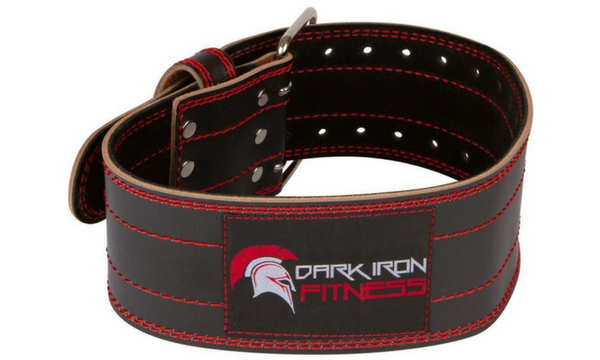
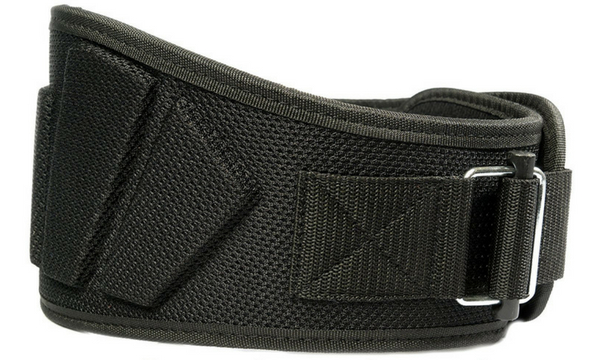
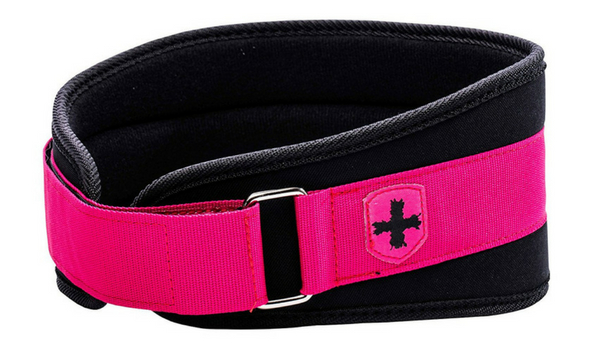
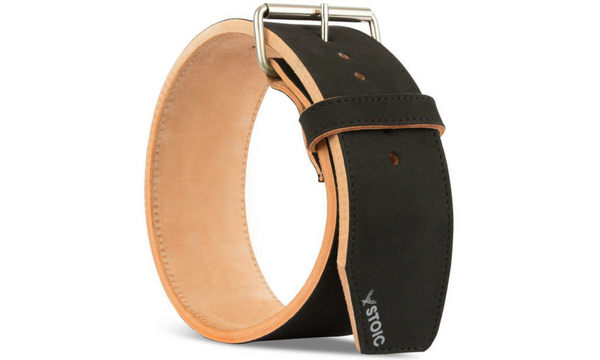
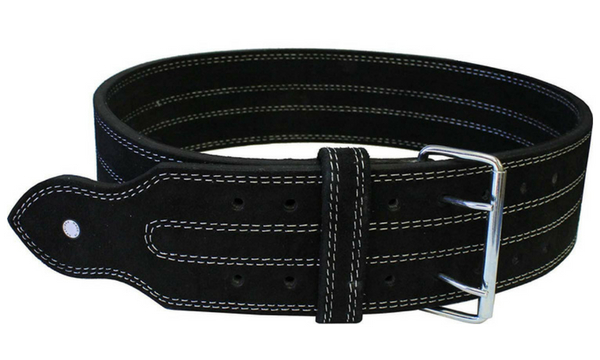
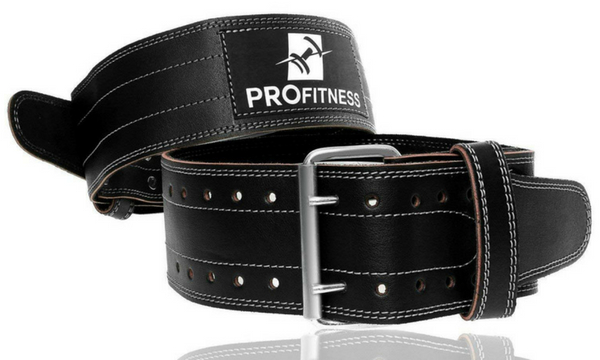
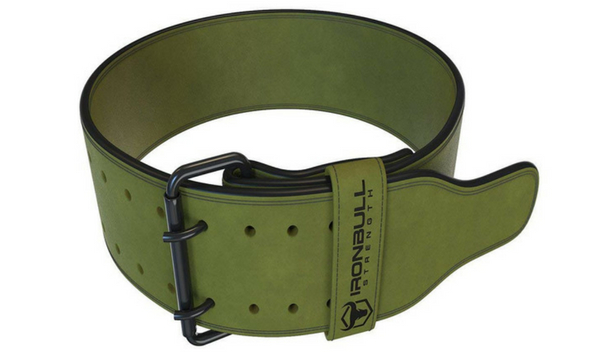
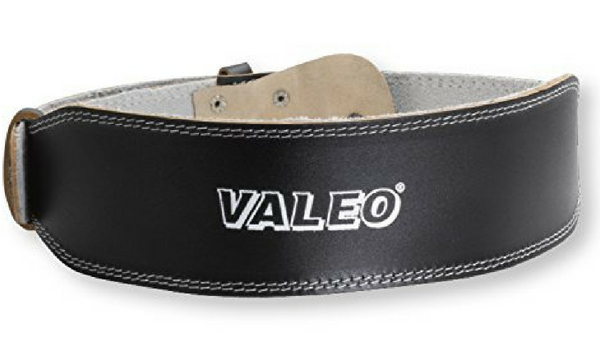
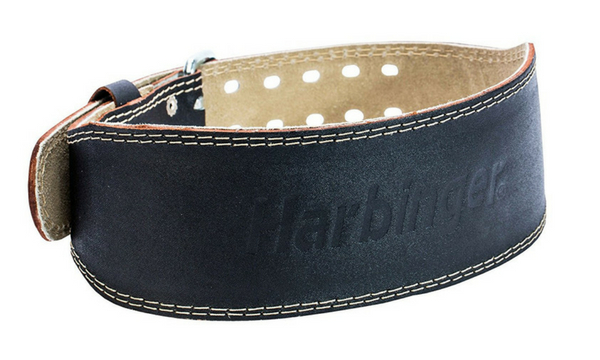
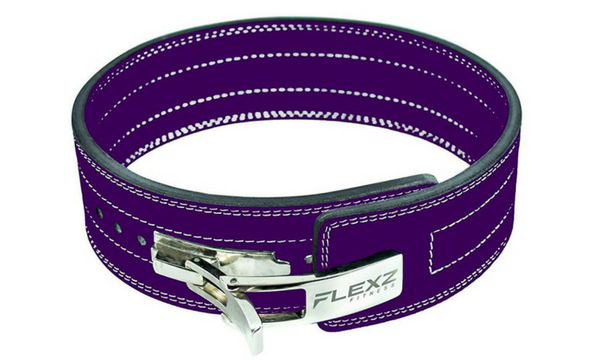


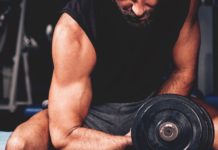
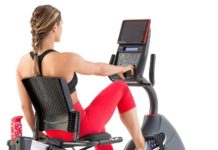
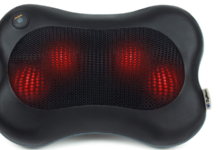
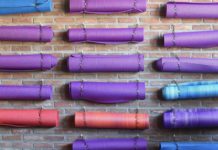





![Best Crochet Hooks for Beginners and Pros [2020 Update] best crochet books](https://www.awebtoknow.com/wp-content/uploads/2018/01/best-crochet-books-100x70.jpg)


